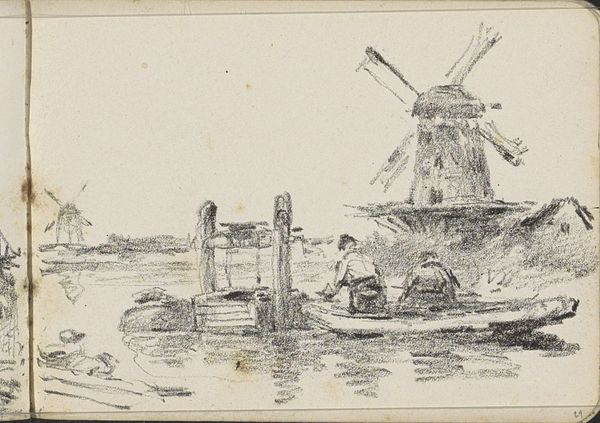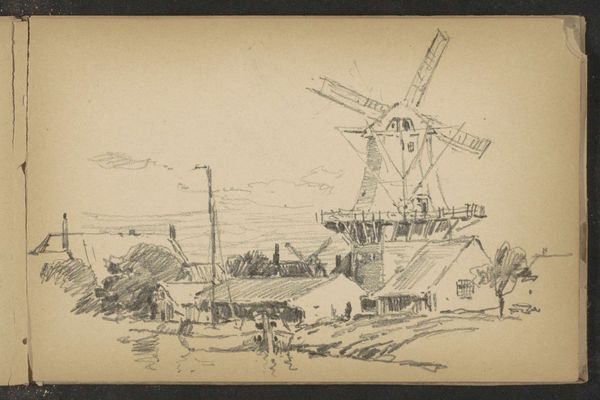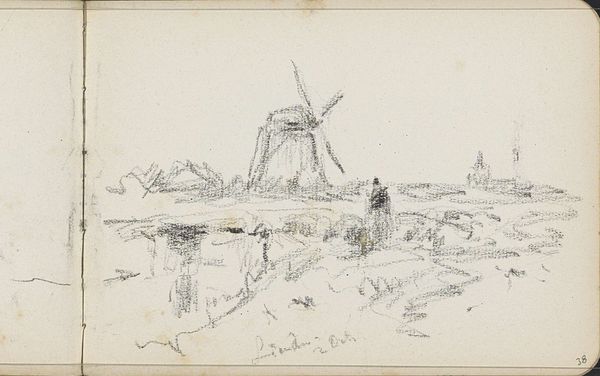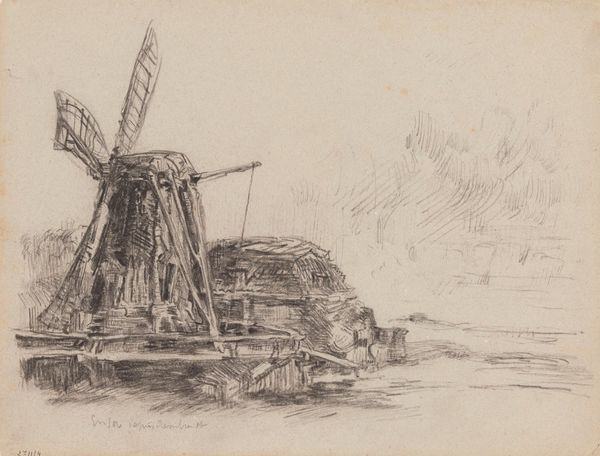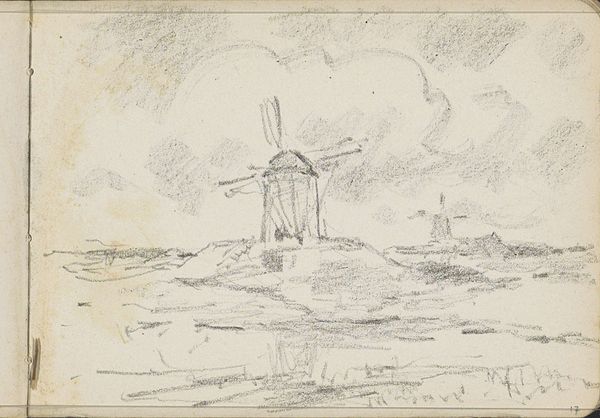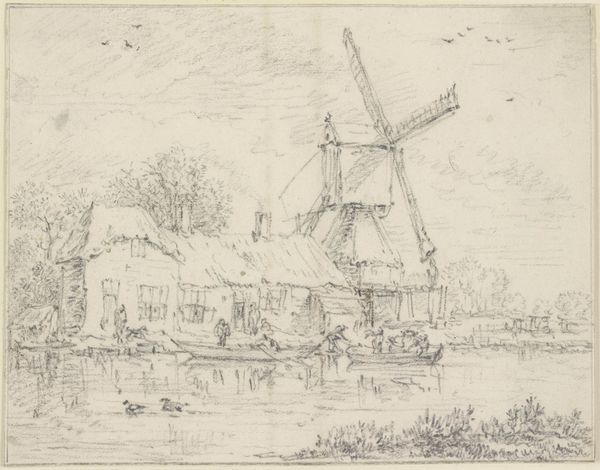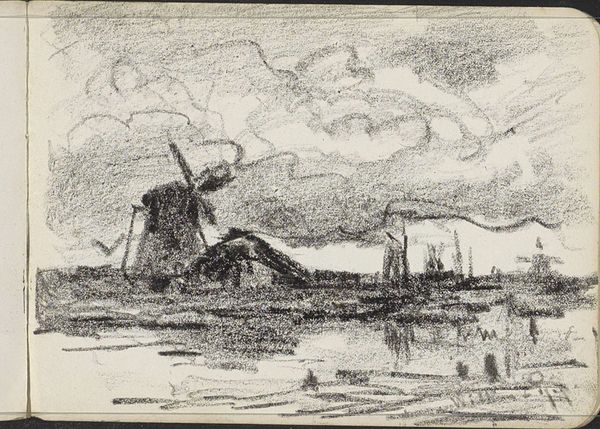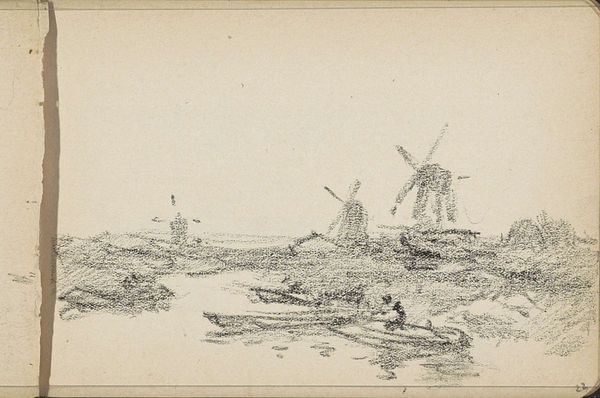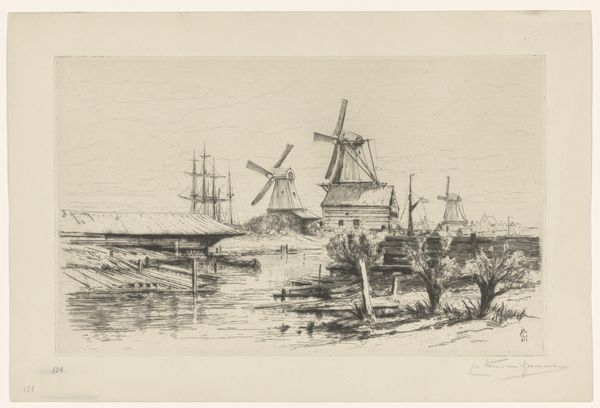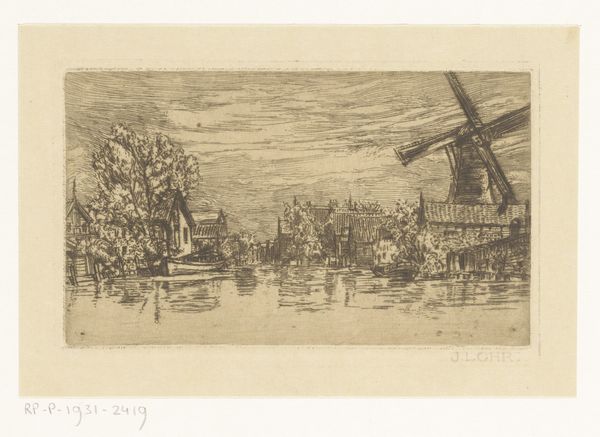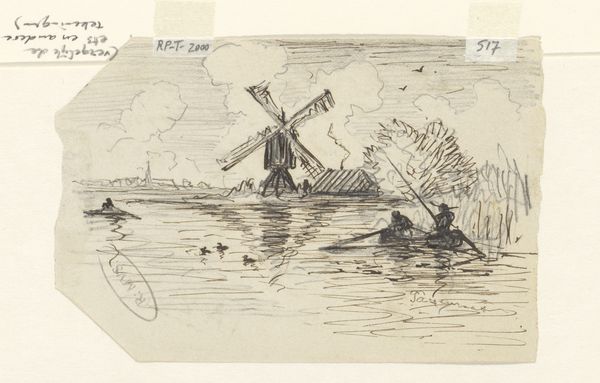
Dimensions: height 114 mm, width 159 mm
Copyright: Rijks Museum: Open Domain
Curator: Ah, here we have Willem Cornelis Rip's "Molen aan een waterkant," dating back to 1907. It’s a drawing, seemingly graphite and maybe some pen work, capturing a waterside scene. Editor: Immediately, I’m struck by its intimacy. It feels like peering into someone's personal sketchbook. The frenetic, almost chaotic lines create this swirling energy, like the wind itself is moving the windmill. Curator: It does have that sense of immediacy, doesn't it? I imagine Rip capturing a fleeting moment, trying to hold onto the essence of the scene rather than creating a precise depiction. And windmills, of course, weren’t just picturesque; they were symbols of Dutch industry and innovation, pivotal to the country’s identity and autonomy, particularly against the ever-present threat of the sea. Editor: Exactly. We tend to romanticize windmills now, but they were essential pieces of infrastructure. And even here, in what appears to be a simple landscape sketch, Rip reminds us of that connection between nature, technology, and labour. The almost scribbled lines surrounding the mill make me wonder if he's suggesting the precarity of this industry— a quiet comment on labor, maybe? Curator: Perhaps! There's also a certain vulnerability to the sketch itself. The paper isn't pristine; you can almost feel the texture and age. This raw quality makes it feel so personal, almost like we're intruding on a private moment of artistic creation. Does it give you a melancholy feeling? Editor: Definitely, a melancholic but also reflective vibe, which makes me wonder who had the privilege to produce artworks depicting windmills. And how accessible was it to visit, depict, or even engage with these sceneries as an activist or simply a woman, or a person of color during that period. This artwork may evoke one specific feeling, however, the fact that only very few people were able to experience what is being portrayed here is crucial to contextualize our experiences as we appreciate the artwork today. Curator: An important point. Thinking about the perspective behind the artwork is crucial, isn’t it? It also reminds me how every little thing that exists in museums used to be people's personal items. Editor: Absolutely, that's the power and responsibility that comes with observing these artworks; as we connect to these artworks we must remain thoughtful of historical and social realities. Curator: Indeed. I’ll certainly keep this new perspective in mind. Editor: Likewise. Art keeps us questioning.
Comments
No comments
Be the first to comment and join the conversation on the ultimate creative platform.
